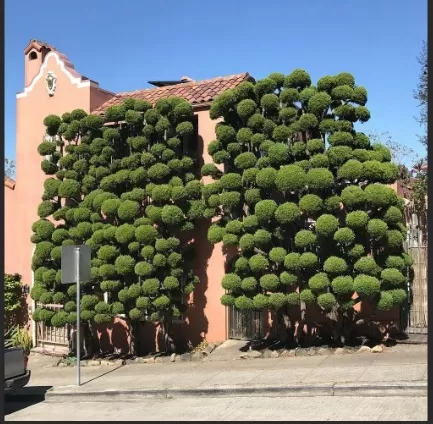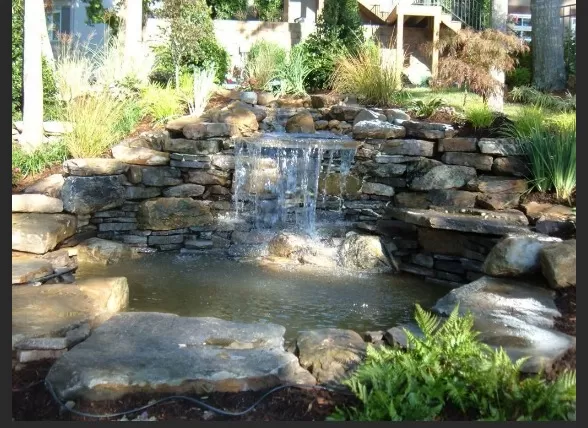Tranquil Outdoor Retreat: 5 Zen Garden Ideas for Serenity. The concept of Zen has become synonymous with a sense of tranquility, calmness, and harmony. In the realm of design, the Zen garden aesthetic encapsulates these qualities, offering a way to create a peaceful and serene outdoor living space. By embracing the principles of simplicity, balance, and natural elements, you can transform your outdoor area into a Zen-inspired sanctuary.
Incorporate elements such as carefully arranged rocks, flowing water features, lush greenery, and minimalist design to evoke a sense of tranquility and mindfulness. Whether you have a small balcony or a spacious garden, you can cultivate a modern Zen garden that promotes relaxation and a connection with nature. Explore the beauty and serenity of the Zen garden aesthetic and embark on a journey to create a harmonious outdoor retreat.
Raked Sand

Raked sand, also known as Karenagare, is a popular feature in Zen gardens.
It gained significant recognition as it adorned the desktops of many executives in the 1990s, complete with a shallow tray, sand, small stones, and a miniature rake.
While white sand is the traditional choice, gravel can also be used effectively.
This low-maintenance landscaping material is an ideal fit for xeriscaped spaces. By incorporating subtle designs into the sand or gravel, you can achieve surprisingly evocative outcomes.
The act of raking the sand itself becomes a contemplative meditation.
Experiment with raking the sand to create wavelike lines, symbolizing and evoking the movement of water.
Alternatively, opt for geometric patterns, raking the sand in straight lines to encircle a flower bed or a sculpted shrub.
Gravel Mountains
The Japanese have an innate ability to find beauty in even the simplest elements, as exemplified by the mesmerizing gravel mountains found at Kyoto’s Silver Palace.
This temple and Zen garden have become a popular destination for tourists due to its unique feature. Standing at over 6 feet tall, the towering cone of sand resembles the reflection of a full moon in a tranquil nighttime pond. Appropriately named Kogetsudai, meaning “moon-viewing platform,” it captures the imagination of visitors.
You can bring a touch of this awe-inspiring sight to your own yard by recreating a smaller version using sand, gravel, or tiny pebbles.
While you may not achieve the same grandeur, it will undoubtedly serve as an eye-catching addition to your outdoor space. Get creative and build your own miniature moon-viewing platform, allowing you to appreciate the beauty and tranquility it represents.
Dry Waterfalls

Although the term “dry waterfall” may seem contradictory, the concept itself is captivating.
By skillfully arranging stones, gravel, and sand, you can create a karetaki, which gives the illusion of a flowing stream of water. This feature serves as an excellent focal point, particularly if your yard has a gentle slope.
However, even on a level lawn, you can utilize large rocks to establish varying heights for your “water” to gracefully cascade down.
Embrace the creative opportunity presented by a dry waterfall and design a unique landscape element that adds intrigue and visual interest to your outdoor space.
The combination of stones, gravel, and sand will mimic the appearance of flowing water, offering a serene and captivating ambiance. Regardless of the technical semantics, the beauty and impact of a well-crafted dry waterfall are undeniable.
Fish Friends
If you’re looking for a captivating and soothing sight, consider incorporating big and brilliantly colored koi fish into your garden.
These majestic fish, reminiscent of goldfish for adults, provide a mesmerizing experience as you observe their graceful movements. However, unlike their smaller counterparts won at carnivals, koi fish require dedicated attention and proper maintenance, starting with a well-designed pond.
To introduce these stunning creatures to your Japanese-inspired garden, begin by researching how to construct a suitable pond in your backyard.
Building a Koi Pond requires careful planning and consideration of various factors. Take the time to explore the diverse and exquisite varieties of koi fish available and educate yourself on their specific care requirements.
While it’s true that maintaining a koi pond can be demanding, the rewards are well worth the effort.
A beautifully designed and well-maintained koi pond will serve as a magnificent centerpiece for your Zen garden, creating a harmonious and tranquil atmosphere. Watching the vibrant koi fish gracefully swim in their aquatic sanctuary will undoubtedly bring joy and serenity to both you and your garden visitors.
Meticulously Pruned Trees

While Zen gardens may not rely heavily on plants compared to Western gardens, they still incorporate carefully pruned trees and shrubs to create a sense of symmetry, order, and simplicity.
The art of meticulous pruning makes a profound statement in these gardens. Even trees that naturally grow from the earth can be shaped and manipulated to embody a specific aesthetic, so it’s time to bring out those hedge trimmers.
If pruning isn’t your forte, don’t worry.
Flowering cherry trees offer a splendid shortcut to evoke the classic Japanese springtime atmosphere. These trees not only add beauty to the garden but are also relatively easy to grow.
To ensure the best results, it’s recommended to choose a cultivar that is native or well-adapted to your specific growing area.
By incorporating meticulously pruned trees and shrubs into your Zen garden, you can achieve a visual harmony that reflects the principles of simplicity and balance.
Whether you choose to master the art of pruning or opt for flowering cherry trees, the result will be a captivating and serene environment that pays homage to the timeless beauty of Japanese gardens.
*The information is for reference only.